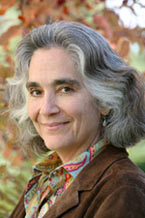
Handy Links
SLAC News Center
SLAC Today
- Subscribe
- Archives: Feb 2006-May 20, 2011
- Archives: May 23, 2011 and later
- Submit Feedback or Story Ideas
- About SLAC Today
SLAC News
Lab News
- Interactions
- Lightsources.org
- ILC NewsLine
- Int'l Science Grid This Week
- Fermilab Today
- Berkeley Lab News
- @brookhaven TODAY
- DOE Pulse
- CERN Courier
- DESY inForm
- US / LHC
SLAC Links
- Emergency
- Safety
- Policy Repository
- Site Entry Form

- Site Maps
- M & O Review
- Computing Status & Calendar
- SLAC Colloquium
- SLACspeak
- SLACspace
- SLAC Logo
- Café Menu
- Flea Market
- Web E-mail
- Marguerite Shuttle
- Discount Commuter Passes
-
Award Reporting Form
- SPIRES
- SciDoc
- Activity Groups
- Library
Stanford
Around the Bay
From the Director: Planning the Future
 As a laboratory, we must constantly look toward our future. Over the past nine months, there has been a concerted effort across the lab to articulate science goals and develop plans for future facilities that will help us achieve those goals. Faculty and staff from across the laboratory have been involved in a variety of planning efforts. The long term scientific future of the laboratory will be on the agenda for the Scientific Policy Committee when it meets at SLAC next week.
As a laboratory, we must constantly look toward our future. Over the past nine months, there has been a concerted effort across the lab to articulate science goals and develop plans for future facilities that will help us achieve those goals. Faculty and staff from across the laboratory have been involved in a variety of planning efforts. The long term scientific future of the laboratory will be on the agenda for the Scientific Policy Committee when it meets at SLAC next week.
We have an opportunity to share our long term plans with the Department of Energy Office of Science this week and next. The Office of Science has given us the opportunity to include, as part of our annual business plan, a major section on our science strategy for our future. We sent our business plan to the DOE Office of Science this past Monday. Next week, Keith Hodgson, Lowell Klaisner, Bill Madia and I will travel to Washington D.C. to present our long term plans to Ray Orbach, director of the Office of Science.
In the near term we are focused on the completion of Linac Coherent Light Source (LCLS) and commissioning of the LCLS Ultrafast Science Instruments (LUSI). We are working towards full utilization of the increased brightness afforded by the SPEAR3 upgrade. We will complete the exploitation of the BaBar data and launch and do science with the Gamma-ray Large Area Space Telescope (GLAST). We will continue to support accelerator research and detector development aimed at a future electron–positron linear collider.
Our strategy for the future is to continue to develop the LCLS facility over the next decade with two additional undulators and utilization of the full linac, broadening the scientific program and delivering unique capabilities not available elsewhere. In parallel, we will seek to strengthen the scientific programs in photon science and particle physics. We will grow and develop our existing SLAC/Stanford science institutes—the Photon Ultrafast Laser Science and Engineering (PULSE) center, the Stanford Institute for Materials and Energy Sciences (SIMES) (formerly XLAM) and the Kavli Institute for Particle Astrophysics and Cosmology (KIPAC)—and explore the creation of others. We will support users on ATLAS and work on the machine and detector upgrades at the Large Hadron Collider. We will do forefront accelerator research with our unique facilities, exploring new accelerator concepts to help define future machines for high energy physics and photon science alike. Our major new initiative in particle astrophysics and cosmology will be the Large Synoptic Survey Telescope (LSST) and there is ongoing investigation into using the PEP ring as a future light source to replace SPEAR-3 and compliment the LCLS by the end of the next decade.
The science that these programs will deliver is extraordinary. We will investigate the fundamental structure of matter and how it behaves on multiple time scales, length scales and energy scales, and we will address fundamental questions that span a broad range of science challenges including understanding the basic science of matter, investigating materials related to energy and the environment, probing the organizing principles of bio-materials and process, and elucidating the fundamental forces and constituents of the Universe. We have an exciting future!